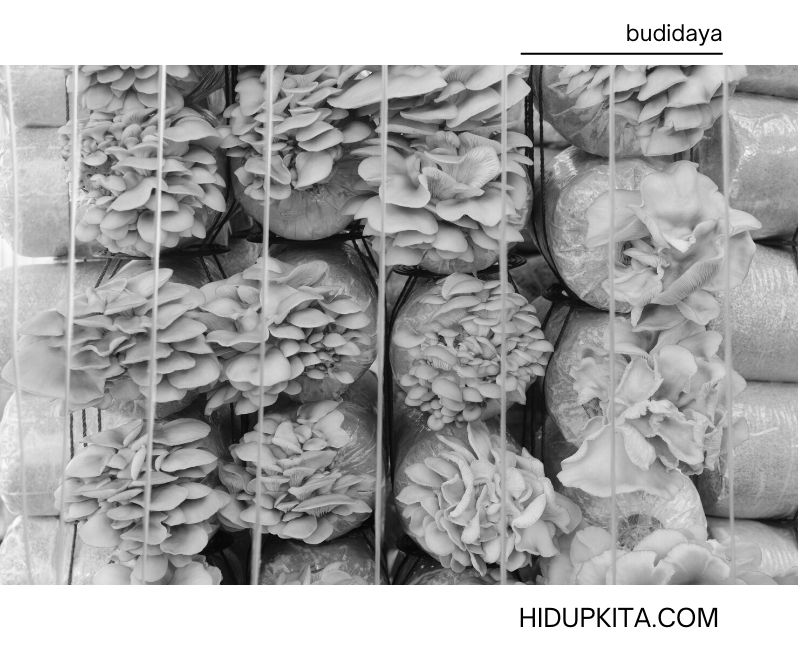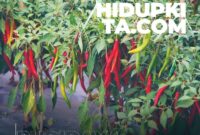Seiring dengan perkembangan zaman, semakin banyak masyarakat yang mulai peduli akan pentingnya keberlanjutan lingkungan dan keseimbangan ekosistem. Salah satu solusi dari perhatian tersebut adalah dengan menumbuhkan kesadaran untuk menjadi petani pembudidaya ikan. Yup, bisnis pembudidayaan ikan sedang naik daun!
Dalam industri pertanian modern, petani pembudidayaan ikan telah berhasil membuktikan diri sebagai salah satu sumber pangan yang berkelanjutan dan ramah lingkungan. Dengan teknik dan pengetahuan yang tepat, mereka mampu memenuhi permintaan pasar akan ikan segar tanpa harus merusak ekosistem dan stok ikan liar.
Bagi sebagian orang, menjadi petani pembudidaya ikan mungkin terdengar seperti sebuah pekerjaan yang monoton dan membosankan. Tapi, siapa sangka bahwa mereka berperan penting dalam menjaga ketersediaan pangan di masyarakat? Bayangkan saja, dengan usaha mereka, kita dapat menikmati ikan segar setiap hari tanpa harus khawatir akan stok yang menipis.
Teknologi pun tidak luput berperan dalam kesuksesan petani pembudidaya ikan. Mereka memanfaatkan pemantauan otomatis dan sistem kontrol lingkungan yang canggih untuk memastikan kondisi ikan tetap optimal. Hal ini membuktikan bahwa menjadi petani pembudidaya ikan juga membutuhkan pengetahuan tentang teknologi modern.
Tidak hanya itu, bisnis pembudidayaan ikan juga memberikan banyak manfaat ekonomi bagi petani lokal. Dengan adanya permintaan yang terus meningkat, petani pembudidaya ikan dapat memperoleh pendapatan yang stabil dan meningkatkan taraf hidup mereka serta keluarganya.
Namun, seperti halnya semua bisnis, tidak ada hal yang mudah. Petani pembudidaya ikan perlu menghadapi tantangan serta risiko seperti penyakit ikan, bahan pakan yang mahal, dan fluktuasi harga di pasar. Tapi, dengan dedikasi dan ketekunan, mereka mampu mengatasi semua rintangan ini dengan sikap santai dan penuh semangat.
Dalam menghadapi persaingan global, penting bagi para petani pembudidaya ikan untuk terus mengembangkan pengetahuan dan keterampilan mereka. Dukungan dari pemerintah dan lembaga terkait juga menjadi hal yang krusial agar mereka dapat terus maju dan berkembang.
Jadi, jangan pernah meremehkan peranan para petani pembudidaya ikan dalam menjaga ketersediaan pangan di masyarakat. Mereka bukan hanya sekedar “petani ikan biasa,” tetapi sebagai garda terdepan dalam menciptakan masa depan yang berkelanjutan dan sejahtera.
Jadi, jika kamu tertarik untuk menjadi petani pembudidaya ikan, jangan ragu untuk mencari informasi lebih lanjut dan mulailah dengan langkah kecil. Siapa tahu, kamu bisa menjadi bagian dari perubahan besar di dunia pertanian dan menjaga kelestarian lingkungan dengan gaya yang santai tapi profesional.
Daftar Isi
Aquaculture: Introduction, Method, Tips, Advantages, and Disadvantages
In recent years, aquaculture has gained popularity as an efficient and sustainable method of fish farming. It involves the cultivation of fish and other marine organisms in controlled environments such as ponds, tanks, or cages. This article will provide an in-depth understanding of what aquaculture is, its methods, tips for successful fish farming, its advantages and disadvantages, and the overall goal of fish farmers.
What is Aquaculture?
Aquaculture, also known as fish farming, is the practice of cultivating fish and other aquatic organisms for commercial purposes. It aims to increase the production of fish to meet the growing demand for seafood and reduce the pressure on wild fish populations.
Methods of Aquaculture
There are several methods of aquaculture, each with its own advantages and disadvantages:
1. Pond Culture
Pond culture involves the rearing of fish in specially designed ponds. It is commonly used for freshwater fish species such as tilapia and carp. The water quality and feeding practices are carefully monitored to ensure optimal growth and minimize the risk of diseases.
2. Cage Culture
Cage culture involves confining fish in cages or nets suspended in open waters such as lakes, rivers, or coastal areas. This method allows for better water circulation and natural feeding, resulting in healthier fish. However, it is highly influenced by environmental factors and requires regular monitoring and maintenance.
3. Tank Culture
Tank culture is suitable for both freshwater and marine species and involves raising fish in large tanks or containers. It offers better control over water quality, temperature, and feeding regimes, making it ideal for intensive fish farming.
Tips for Successful Aquaculture
1. Choose the Right Fish Species
Before starting an aquaculture venture, it is crucial to research and select the fish species that are suitable for the intended environment and market demand. Factors such as growth rate, tolerance to environmental conditions, and market value should be considered.
2. Ensure Good Water Quality
The quality of water directly affects the health and growth of fish. Regular monitoring of water parameters such as temperature, pH, dissolved oxygen, and ammonia levels is essential. Proper filtration, aeration, and regular water exchange help maintain optimal water quality.
3. Provide Adequate Nutrition
A balanced and nutritious diet is vital for the growth and overall health of fish. Feed them a diet that meets their specific nutritional requirements and adjust the feeding regime based on their age and size. Overfeeding should be avoided to prevent water pollution and fish health problems.
4. Disease Prevention and Management
Implement strict biosecurity measures to prevent the outbreak and spread of diseases. Quarantine new fish arrivals, regularly inspect the fish for any signs of illness, and promptly treat or isolate affected individuals. Regular vaccination and good hygiene practices are crucial for disease management.
Advantages of Aquaculture
Aquaculture offers numerous advantages over traditional fishing methods:
1. Reduced Pressure on Wild Fish Stocks
By cultivating fish in controlled environments, aquaculture helps reduce the reliance on wild fish populations. This contributes to the conservation of biodiversity and the preservation of natural ecosystems.
2. Increased Food Production
Aquaculture plays a significant role in meeting the increasing global demand for seafood. It provides a reliable and consistent supply of fish, reducing the risk of food shortages and price fluctuations.
3. Employment Opportunities
The growth of the aquaculture industry creates various job opportunities, particularly in rural and coastal areas. It stimulates economic development and improves the livelihoods of local communities.
4. Efficient Use of Resources
Aquaculture allows for the efficient use of land, water, and feed resources. Compared to traditional livestock farming, fish farming requires less land, produces fewer greenhouse gas emissions, and consumes less water and feed per unit of protein produced.
Disadvantages of Aquaculture
Despite its many advantages, aquaculture also has some drawbacks:
1. Environmental Impact
Improper management of aquaculture systems can lead to negative environmental impacts such as nutrient pollution, habitat degradation, and the introduction of non-native species. Efforts should be made to minimize these impacts through sustainable practices.
2. Disease Outbreaks
Intensive fish farming conditions can increase the risk of disease outbreaks. Crowded environments, poor water quality, and stress weaken the immune system of fish, making them susceptible to infections. Disease prevention and management strategies are essential to minimize losses.
3. Escapes and Genetic Interactions
Sometimes, farmed fish escape into the wild, potentially interbreeding with wild populations. If genetically inferior farmed fish interbreed with wild fish, it may negatively impact the genetic diversity and fitness of wild populations.
4. Dependence on Fish Meal and Fish Oil
Many aquaculture feeds are based on fish meal and fish oil, which are derived from wild-caught fish. This increases the pressure on wild fish stocks and raises concerns about the sustainability of fish farming practices. Research and development of alternative feed sources are necessary.
The Goal of Fish Farmers
The primary goal of fish farmers is to produce high-quality fish for various purposes, including food consumption, ornamental trade, or stocking for recreational fishing. They aim to maximize production efficiency, ensure fish welfare, and contribute to sustainable and responsible aquaculture practices.
Frequently Asked Questions
1. What are the necessary licenses and permits required for starting an aquaculture farm?
Starting an aquaculture farm requires obtaining necessary licenses and permits from the relevant authorities, which may vary depending on the country and region. Typically, you would need licenses for water use, farm operation, environmental compliance, and fish importation or transportation. It is important to consult with local regulatory agencies to ensure compliance with all applicable regulations.
2. Can aquaculture be practiced in landlocked areas without access to natural water sources?
Yes, aquaculture can be practiced in landlocked areas without access to natural water sources. Alternative methods that can be used include the establishment of recirculating aquaculture systems (RAS) or the construction of artificial ponds and tanks. These systems rely on recirculating and treating water to maintain optimal conditions for fish growth.
Conclusion
In conclusion, aquaculture is a significant contributor to global food production and offers numerous advantages such as reducing the pressure on wild fish stocks and creating employment opportunities. However, it also has its challenges, including environmental impacts and disease outbreaks. Fish farmers play a crucial role in ensuring the sustainability and responsible management of aquaculture operations. By implementing proper management practices, embracing technological advancements, and prioritizing fish welfare, aquaculture can continue to thrive and meet the increasing demand for seafood while minimizing its negative impacts on the environment.



